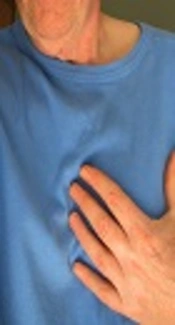1. Background
The Global Burden of Diseases study found that after cardiovascular disease, stroke is the second contributor to mortality and morbidity (1), with multiple sclerosis being the most common cause of adult neurologic disabilities (2). It is noteworthy that stroke affects 33 million individuals every year from which two-thirds of these cases occur in developing countries (1). Stroke has several negative effects on patient outcomes that alter motor function, impair sensory function, and result in hemi-neglect, hemiparesis and spasticity (3, 4). Survivors of stroke and their families are faced with changes in lifestyle compromised by a reduction of function and mobility, especially activities of daily living (ADLs). This results in an increased risk of inactivity and complications such as falls and subsequent injuries including impairments in balance, walking speed and endurance in a stroke survivor (5). Additionally, once an individual experiences a stroke they are often forced to rely on others for assistance, with adaptive equipment for assistance with ADLs. Therefore, improving motor outcomes after stroke, with a focus on neurorehabilitation, is essential. Current therapeutic interventions focus on improving impairments and confronting limitations, even in activities as simple as walking (6-8).
Today, functional electrical stimulation (FES) and repetitive transcranial magnetic stimulation (rTMS) have been recognized as noninvasive interventions that can improve motor function in stroke survivors (9). The mechanisms of each of the two methods are different and have been explained in detail previously (10, 11).
2. rTMS in Post-Stroke Rehabilitation
Post-stroke rehabilitative brain stimulation is used to increase lower and upper limb function in particular walking, control of posture, and upper extremity movements (9). rTMS stimulates selected brain areas (areas related to modulating cortical excitability and function). Stimulation with rTMS can be varied by changing parameters, for instance the frequency of TMS, stimulation space, intensity, site, and duration (11). Clinical trials have typically used rTMS in patients post-stroke for a time period of approximately 30 minutes over a duration of 3 months (9). The previous studies have demonstrated that three weeks of rTMS with high frequency could improve impairments in motor function among patients after stroke (9, 11). Also, a systematic review and meta-analysis showed that “five-session rTMS treatment could best improve stroke-induced upper limb dyskinesia acutely and in a long-lasting manner and rTMS applied in the acute phase of stroke is more effective than rTMS applied in the chronic phase”. These results are important regarding motor restoration. Motor function is the major aim of post-stroke neurorehabilitation with the purpose of controlling more complicated limb activities such as improvements in gait speed and trunk control. Research in both post-stroke and healthy participants has demonstrated that rTMS can activate the area of the motor cortex related to motor function.
3. FES in Post-Stroke Rehabilitation
Functional electrical stimulation could improve motor function through the use of a constant frequency electrical stimulation of skeletal muscles. From the 1990s, FES has been progressively used post-stroke in patients for improving gait, motor and walking ability (6). In other diseases, FES combined with cycling training is a safe and economic method to reinforce coordination between lower limb muscles.
Current studies suggest that FES combined with cycling training could improve aerobic capacity, strength activation of lower extremity muscles, smoothness of cycling movement, and cardiopulmonary function. In addition, FES can reduce hypertonia and complications of immobilization (6, 8).
4. Role of FES and rTMS in Post-Stroke Rehabilitation
It is possible that a multimodal approach using FES along with rTMS, might potentially enhance motor performance post-stroke and could lead to increased levels of participation and activity and enhanced activity performance (6), while FES has small effect sizes when utilized in isolation (10). Therefore, rTMS can be used to enhance the end product of FES in post-stroke rehabilitation.
Currently there does not exist a standard pattern of timing about concurrent use of rTMS and FES as reported in previous studies. Therefore, it is essential to develop a protocol including a combination of rTMS and FES that is pragmatic and can be performed in both inpatient and outpatient settings (12). The protocol should emulate those previous successful rTMS studies, in addition to providing the opportunity for clinically feasible and effective combinations of rTMS and FES (13).
5. Discussion
Neurological deficits related to brain injuries naturally improve to some extent in the first few weeks. This occurs through mechanisms of neuronal reorganization including the creation and reinforcement of new pathways and synaptogenesis (it is distinction anatomically) for homologous functionally. The process of recovery could differ among patients’ post-stroke in the acute phase. Therefore, understanding the mechanisms which could promote or prevent the process of recovery is essential for designing optimal treatment approaches.
We suggest to researchers that perform rTMS the following: A magstim rapid stimulator should be used in conjunction with an H-coil to provide rTMS. Actually, the H-coil design for optimal activation of the leg and hand motor cortex should be positioned on the vertex as the optimal location for obtaining lower limb motor responses.
Furthermore, the FES method should be designed for unilaterally stimulating the paretic lower limb. Surface electrodes should be fixed ventrally on the rectus femoris and vastus medialis obliquus and dorsally on the biceps femoris and semitendinosus muscles. Information on stimulation parameters in the literature is limited.
Therapists should introduce patients to an introductory session to allow them to acclimate to the sensory stimulation they will experience during a muscle contraction. We suggest that the combination of rTMS and FES may be advantageous in improving motor performance post-stroke.
